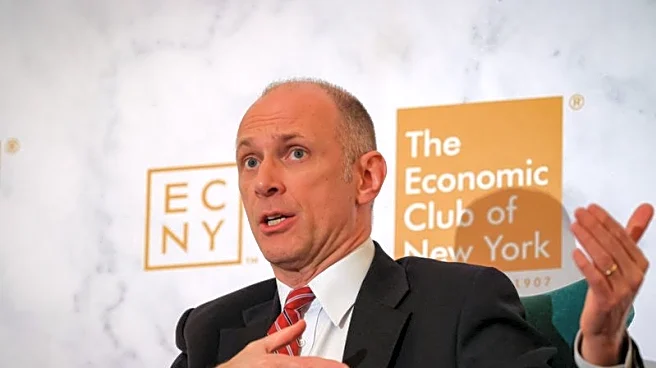What's Happening?
Traditional banks are facing challenges in offering competitive interest rates on savings accounts, with the average rate currently at a mere 0.38%, according to the FDIC. This low rate is causing savers to lose money by keeping their funds in traditional savings accounts. In contrast, high-yield savings accounts are offering rates between 4% and 4.50%, making them significantly more profitable. For instance, a $50,000 deposit in a high-yield savings account could earn hundreds or even thousands of dollars in interest over time. The potential for interest earnings is substantial, especially given the current rate climate. However, these rates are variable and subject to change based on market conditions, which means savers need to act quickly to take advantage of the favorable rates available now.
Why It's Important?
The shift from traditional savings accounts to high-yield alternatives is significant for both consumers and the banking industry. Consumers stand to gain by maximizing their interest earnings, which is crucial in a financial environment where inflation can erode savings. For banks, this trend highlights the need to innovate and offer more competitive products to retain customers. The move towards high-yield accounts also reflects broader economic conditions, including potential interest rate cuts by the Federal Reserve. As banks navigate these changes, they may need to collaborate with fintech companies to offer more personalized and agile services. This shift could lead to increased competition and innovation in the financial sector, benefiting consumers with better options and services.
What's Next?
With a high probability of the Federal Reserve cutting its benchmark interest rate, banks may face further pressure to adjust their offerings. While a potential rate cut might initially have a muted impact on high-yield savings accounts, over time, it could lead to lower rates. This scenario underscores the importance for savers to act promptly to capitalize on current high rates. Banks may need to explore partnerships and technological advancements to maintain competitiveness and meet evolving consumer demands. Additionally, the financial industry might see increased regulatory scrutiny as it adapts to these changes, potentially influencing future policy decisions.












